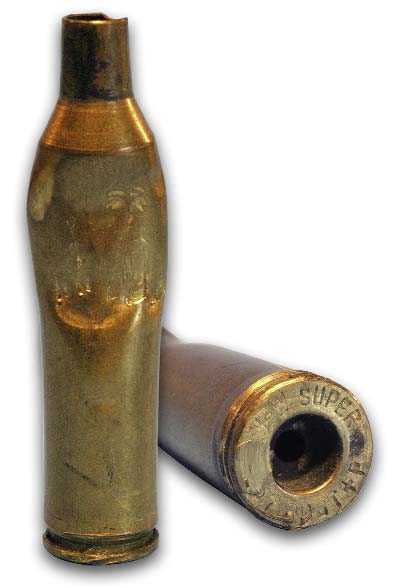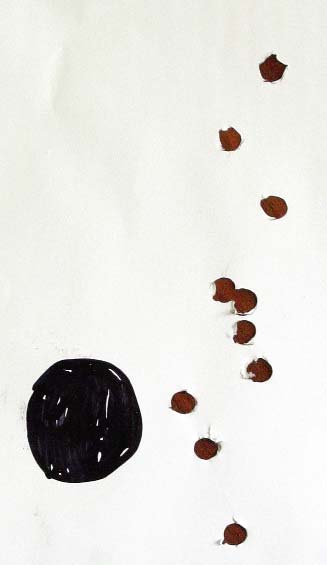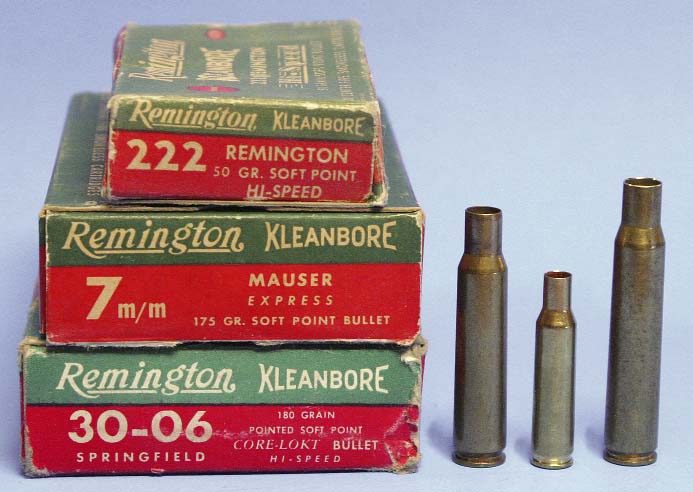Mistakes and Misconceptions
Load Development
other By: John Barsness | June, 25
In the past couple of years, several handloaders have asked why their new brass stretches so much that it starts to develop a shiny ring a half-inch from the case head, indicating severe stretching, often after a single firing. Sometimes their cases crack along this ring after a few firings.

The answer has always been “yes.” Apparently many new handloaders (and even some experienced ones) assume that Federal, Lapua, Norma, Remington, Winchester, etc. don’t really know how to make cartridge cases, so it’s up to handloaders to fix new brass by running it through a sizing die.
In a way this is understandable. Much new brass is sold in Ziploc® bags. Between the factory and our sweaty hands, it gets jostled repeatedly by trucks and store clerks, so the necks end up dinged and dented. This leads to the assumption that the entire case needs spiffing. Since new handloaders are really eager to use their new tools, they run each case into the full-length die.
The trouble arises due to the instructions that usually accompany new dies. These usually suggest that the die should be screwed down until it firmly touches the shellholder. This will work on a basic level, because any .30-06 case pushed into a .30-06 die will fit most .30-06 rifles. But “adjusting” a full-length die this way can also create a tiny bit of extra headspace.
Rifle chambers and reloading dies are made with reamers that cut a hole in the rear of the barrel or the die body. However, like

The result is that rifle chambers and full-length resizing dies vary slightly. Let’s say our die was made with a minimum-dimension reamer, and our rifle chambered with a maximum-dimension reamer. If we follow the die-maker’s directions, resized cases will fit slightly loosely in the chamber, and the case walls will start stretching lengthwise on the first firing.
This is exactly what often happens when we resize brand-new brass. The solution is to only resize the dinged-up neck, by pushing it over the expander ball. Don’t resize the entire case until the die is set up properly.

There are tools that measure cases and chambers to help us adjust our sizing dies. If you don’t want to buy an extra tool, however, start with the die firmly contacting the shellholder, then back the die out a quarter-turn. Resize a fired case and try it in your rifle. The case will probably take some effort to chamber. If so, turn the die in just a little bit, resize the case again and retry it in the rifle’s chamber. Repeat this process until the case chambers with a slight amount of effort, then tighten the lock-ring on the die.
Another common misconception is that case separations are caused by excessive pressure. Well, no. Over the decades I’ve

Now, often cases with a shiny ring in front of the case head, or actual cracks in the same area, also have flattened primers, supposedly a classic sign of high pressure. I hate to break the news, but flat primers aren’t necessarily an indication of high pressure, or even a very good sign.
The primer myth has been around long enough that Gen. Julian Hatcher warned against it way back in 1947, when his book Hatcher’s Notebook was first published. (This is one of the basic texts of rifles and ammunition, even today, and every serious shooter should own a copy.) Early in the chapter on headspace, Hatcher discusses wildcat cartridges: “Usually the originator of one of these cartridges had no facilities for taking pressures, and depended entirely on the notoriously unreliable [emphasis mine] method of judging pressures by the appearance of the primer.” But myths are much harder to kill than create, so some handloaders continue to believe they can divine pressure from a primer.
When a rifle cartridge goes off, the primer is pushed backward, due to powder gas pushing through the flash-hole, so it would seem to make sense that a really flat primer indicates high pressure. Not necessarily. A really flat primer can also be caused by slightly excessive headspace.

If the pressure is higher, however, as with the .30-06, the rear of the primer itself expands a little as it backs out, since it’s no longer supported by the primer pocket. In another micro-second the case itself is thrust back over the slightly expanded primer.
At the same time, the case stretches a little bit, so the handloader also finds a shiny ring a half-inch in front of the case head. Our innocent handloader now sees what he thinks are two signs of high pressure, when in reality the only problem is oversizing the case.
Primer cups also vary in thickness and hardness not just from brand to brand, but lot to lot. Add tiny differences in headspace, and trying to “estimate” pressures from primer appearance is like trying to make shrimp jambalaya out of tofu and spinach.
Now, the case itself can show signs of excessive pressure. One of the virtues of brass is that up to a certain pressure it remains flexible, returning near its original shape even after an instant of very high pressure. This is why brass is used in cartridge cases: The brass expands firmly against the chamber walls as the powder gas expands, sealing the chamber. But if subjected to “excessive” pressure, brass doesn’t spring back after firing. Instead it starts to flow.
The first sign of excessive pressure is a small imprint on the case head from the ejector slot hole in the bolt face. This can be misleading, however, especially in a new rifle, due to a little ridge left by machining around the edge of the ejector hole. This ridge will eventually wear away with use, but initially it can leave a definite mark on brass even when firing factory ammunition.
Today’s brass is often hard enough that signs of real distress don’t appear until the pressure is over 70,000 psi, above the longterm limit of modern rifle steels. So even if your brass doesn’t show ejector-hole marks, it doesn’t mean the load is safe, no matter what your cousin Elrod claims. One of the classic examples is the 7mm STW, originally developed as a wildcat. Many early users of the STW claimed they could push 140-grain bullets3,500 to 3,600 fps without any traditional sign of excessive pressure – and they were right. But when the folks at Remington tested their loads, they found pressures of 70,000+ psi, the reason factory 7mm STW ballistics were toned down considerably.
Another common handloading misconception is that precisely weighed powder charges are necessary for accuracy. The idea behind this myth is that the same powder charge in each round ensures that the bullets from our handloads leave the muzzle at exactly the same speed every time.
Well, no. First, it’s physically impossible for even identical powder charges to push a bullet to exactly the same speed, due to other variations, including the diameter of individual bullets, the condition of the bore and slight differences in individual primers and cases. Also, modern rifle powders are designed to burn most consistently within a certain pressure range. If peak pressure is outside that range, the powder won’t burn consistently, even with the same amount of powder in each round.
Instead of absolutely identical muzzle velocities, accuracy is due to matching ammunition to barrel vibrations. Barrels vibrate like a tuning fork during firing, mostly up and down. The muzzle pauses at the top and bottom of these vibrations. A truly accurate load occurs when we find a powder charge that allows the bullet to leave the muzzle during these pauses.

Then we go to the range and shoot these loads at a target 200 to 300 yards downrange, allowing the barrel to cool between shots. The normal ladder target will show a vertical dispersion of the bullet holes – but somewhere in that vertical line several holes will cluster close together. This is the sweet spot, where the variations in powder and barrel meet.
We can then try a few minor variations on those powder charges, though even then the precise charge will likely vary slightly on different days, due to differences in temperature. Many modern powders are remarkably temperature- resistant, but even the best will produce slightly varying velocities, especially on warm days.
The main point, however, is varying the charge .2 grain in rounds the size of the .223 Remington, or .5 grain or more in cartridges that hold 75 to 90 grains of powder, won’t make any noticeable difference in group size. We can even prove this to ourselves after developing an accurate load, whether by a ladder test or shooting groups.
Let’s say the “magic load” for our .30-06 and 180-grain Partitions turns out to be 58.5 grains of Hunter. We can then load up several rounds with 58.0, 58.5 and 59.0 grains of powder and shoot some more groups. Those groups will average about the same size as with charges of precisely 58.5 grains. (Go ahead, try it.) This means that all the time many handloaders spend on precisely weighing charges is pretty much wasted, especially when loading for a typical big game rifle.
Our final myth has nothing to do with handloading but has bothered me for a few years, ever since I purchased my first rifle chambered for the .222 Remington. When the .222 appeared in 1950, more than one gun writer pronounced it a scaled-down .30-06 cartridge – and just about every gun writer who’s ever written about the “triple-deuce” since has claimed the same thing.
After buying some shiny new .222 brass, I took a look at one of the cases and for the life of me couldn’t see a scaled-down .30- 06. The proportions were wrong. So I did some basic geometrical figuring with loading manual drawings of both rounds. It turned out that the .222 is not a scaled-down .30-06. Instead its proportions are closest to a scaled-down 7x57mm Mauser.
Historically, it’s easy to see why the .30-06 comparison was made. In 1950 none of the factory-made varmint rounds had a rimless case. Most were rimmed, including the .22 Hornet, .218 Bee and .219 Zipper. The .220 Swift case was semirimmed but didn’t resemble the .30-06 except in rim diameter. So any small, rimless .22 centerfire was going to be compared to the archetypal American rimless cartridge, the .30-06. But that still doesn’t make the statement true. Feel free to use that bit of trivia to annoy other handloaders. It won’t do you a bit of good otherwise.

